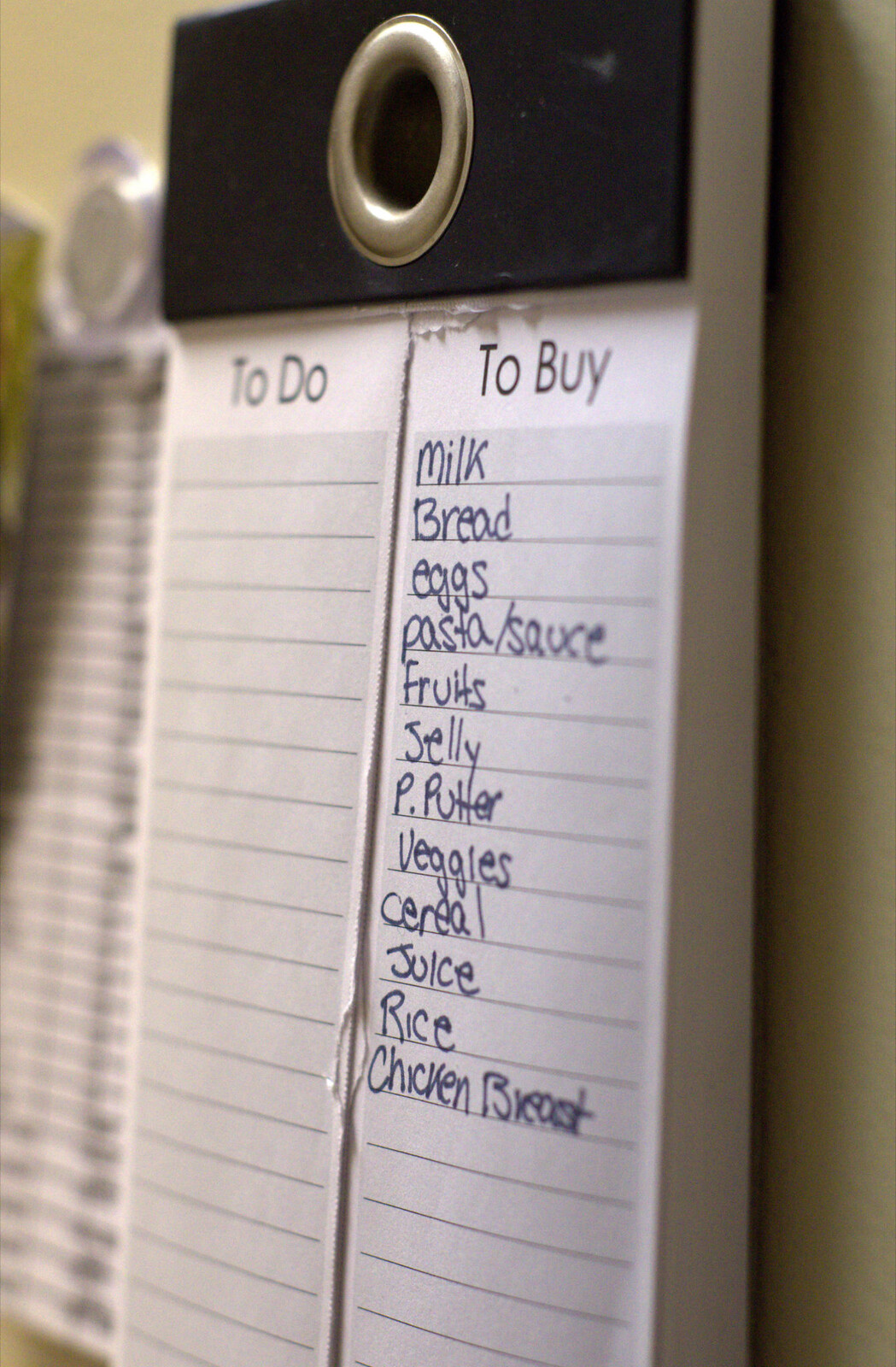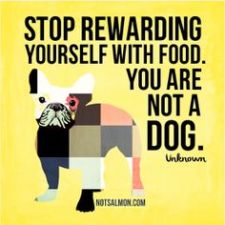I’ve had a number of clients lately ask me about the “best” things that they should be eating, especially on days when we’ll be working out. I can definitely appreciate the question; nutrition is a complex topic with as many right answers as there are people in the world. Combine that with an array of misinformation (think fad diets) and the fact that you are basically doing chemistry inside your very unique body, and the whole idea can easily become overwhelming. You may find yourself thinking, ‘Man, nutrition is really hard. I don’t know how to cook/pick healthy foods/loose weight/gain muscle/etc. I’ll just get this [prepackaged food] that says it’s designed for what I want so I don’t have to think about it…’
I get it! And I’ve been there, too! That’s why I’ve decided to write about nutrition for today’s post; so all of you can have access to what knowledge I have.
Step 1: Know Your Metabolism
Your metabolic rate, or your metabolism, is the pace at which your body uses fuel (food) to do the activities of your day (stay alive, walk the dog, work, workout, etc). This is NOT a constant and can be greatly affected by your lifestyle.
The trouble is, most of us have NO IDEA what our current metabolic rate is (or RMR, for resting metabolic rate). This information can be critical in determining the first step of eating well: eating enough calories for your body!
A lot of us, especially women, in our society are afraid of calories. We associate that word with weight gain, fat, and even lazy! Unfortunately, by not eating enough, you may in fact be sabotaging your workout and healthy weight management goals!
Your body knows how much fuel it needs to keep all of your various, complex, amazing systems running. For example, if Bobbi does not consume enough fuel in their day (or consistent fuel from day to day), Bobbi’s body will adjust its engines to conserve fuel. It will start shutting down nonessential processes in an effort to slow down Bobbi’s metabolism. This can lead to unintentional weight gain, which in turn may cause Bobbi to start eating less in an effort to slow down the weight gain. Bobbi’s body notices it’s not getting enough fuel, so it goes through the process of slowing down its metabolism again. It may start converting everything Bobbi eats to fat stores, in an effort to prepare for what is surely a famine. This is called Starvation Mode.
Fortunately for Bobbi (and the rest of us), metabolism can be changed. If Bobbi consumes a regular amount of good fuel, then their body will bring itself out of Starvation Mode and functions will start returning to normal. This process will be slow, as all changes for the body are and should be. Slow change is sustainable.
Thanks to science and technology, there are tests that can be performed to determine what your metabolic rate is. They usually run somewhere around $50-$100, and need to be performed by a trained professional or technician.
RMR, or Resting Metabolic Rate test
VO2Max test
You can also use online apps to estimate what your metabolic rate is. Bear in mind that these estimates will not be as accurate, but it can give you a good place to start your journey.
Metabolic rate calculator
**Again, using an online app will most likely NOT give you an accurate estimate, but it can at the very least tell you the lowest amount that you should be eating (as in don’t eat less than it suggests). For instance, the link above doesn’t ask for pertinent information like how active you are/if you are pregnant/etc. It’s suggestion for me is only 1/3 of what I should be aiming to get on a daily basis.
Step Two: Figure Out What You Need
Okay, so once you know how many calories (or units of energy, for those who fear the “c” word) you should be getting on a daily basis, it’s time to figure out what your particular needs are. To keep things simple, we’ll only be looking at the 3 macronutrients in this blog post, but bear in mind that an imbalance of micronutrients can also effect how your body functions. You can enlist the help of a health care provider or nutritionist to help you figure out what holes your diet has if you are looking for more information about that topic.
Your 3 macronutrients are carbohydrates, fats, and protein, and every person needs some ratio of all three of them. Often I encounter clients trying to cut out one or more macronutrient group with limited success toward their weight management goals. This is because our bodies are designed to function with all three groups, and they all have equally important roles to play for our bodies.
Carbohydrates

Eat this stuff.
I’ll go ahead and assert that most if not all people need to be consuming a majority of carbs in their diet. Now, bear in mind that carbohydrates come in more varieties than white pasta and breads. Fruits, veggies, and whole grains (including wheat, amaranth, quinoa, rice, spelt, and a whole heck of a lot more than I have time to write about) are all in the carb family.
Carbs are important because they are the only things that get turned into glycogen, which is the main fuel source for your working muscles and your brain. Choosing healthy, complex carbs is a great way to get the energy you need for your body without loading up on the empty calories that we tend to associate with all carbs in general. Complex carbs are things that take your body longer to break down; think whole grains and crunchy, fibrous fruits and veggies versus their simpler counterparts, white grains and squishy fruits and veggies.
Fats

Eat this stuff.
A few decades ago, a trend in food came about that said “Hey, if we get rid of fat in food then people won’t gain fat from food! Yay!” Unfortunately this was an incorrect hypothesis, but our concern about cutting all fats out of our food persists to this day.
Fat is a necessary part of every body and every diet. Fat insulates our bodies, cushions our organs, helps us process certain vitamins and minerals, makes for healthy hair, nails, and skin, plays a large role in reproductive regulation for women, and composes most of your nervous system (to name a few things). And, although critical, it’s also important that this macronutrient make up the smallest portion of our daily diet.
When choosing fats, pick options that are real fats (aka not transfats!!) and very lean. Your fat should also come from a food that’s already doing another job for you. For instance, if you eat salmon for protein, you’re also getting an awesome source of Omega-3s and other fatty acids. Nuts are also a great source of protein in addition to fat. Other options include lean cuts of meat, avacados, coconut, oils, and cheeses. As with all things in life, moderation is key. It may even help to rename this category splurges.
Protein

Eat this stuff, too.
Everybody loves this section! And most people in Western culture are probably getting enough of this very important macronutrient. Keeping your options lean and varied will give you the greatest health benefits while still providing essential amino acids. When you eat protein, your body breaks it down into different amino acid chains. These chains are the building blocks for your muscles, and since it’s a pretty involved job to break the protein you’ve eaten down into building blocks, it has the added benefit of helping you feel full longer!
If you don’t follow a carnivorous persuasion, there are many options you can use to get enough protein in your day (about 50g for women, 90g for pregnant women, and 60g for men). Nuts, legumes, certain vegetables, and dairy products all contain impressive amounts of protein. You just might have to work a little harder to consume your protein over the entire day instead of in one meal.
**If you are a person who is looking to gain more muscle mass or are more active in general, you may need more protein than the average person.

DO NOT EAT THIS STUFF.
Step Three: Eat A Balanced Meal Every Time You Eat
Maybe you like to eat 3 meals a day. Maybe you prefer to eat 6 small meals a day, so it’s more like grazing. Maybe you use a protein shake for at least one meal a day. Whatever your food lifestyle looks like, make sure that everything you put into your body is balanced. Not only does this make it easier to determine if you’ve covered your nutritional bases throughout the day, but it helps keeps your blood sugar in a happy homeostasis!
This applies whether you’re looking to eat a pre or post workout snack or planning your week’s worth of meals. A balanced meal contains all three of your macronutrient groups in appropriate ratios. Here are a few of my favorite examples, but feel free to experiment with what you like best:
Post Workout Snack
1 medium apple (95 cal; 0.3g fat; 25g carbs; 0.5g pro)
3 Tbsp natural peanut butter (285 cal; 24g fat; 7g carbs; 8g pro)
2 cups dark chocolate almond milk (200 cal; 2.5g fat; 19g carbs; 1g pro)
Total: 580 cal; 26.8g fat; 51g carbs; 9.5g pro
Morning Meal; I eat 1/2 when I wake up, and 1/2 about 2 hours later after walking the dog
2 farm fresh eggs (160 cal; 10g fat; 1.2g carbs; 12g pro)
2 cups plain yogurt (280 cal; 8g fat; 32g carbs; 22g pro)
1/4 cup frozen blueberries (20 cal; 0.3g fat; 5g carbs; 0.3g pro)
1/2 cup peaches (30 cal; 0.2g fat; 8g carbs; 0.7g pro)
2 slices gluten-free toast (160 cal; 7g fat; 24g carbs; 2g pro)
2 tsp butter (60 cal; 8g fat; 0 carbs; 0 pro)
2 Tbsp raspberry preserves (100 cal; 0 fat; 26 carbs; 0 pro)
Total: 810 cal; 33.5g fat; 96.2g carbs; 37g pro
Please be very aware that the amount I eat and the amount you eat may not need to be the same. I try to eat at least 400-500 calories at each meal, and I eat about 6 times a day. My meals always follow the same trend: mostly carbs, usually from fruits and veggies; a healthy dose of healthy fat; and a respectable amount of protein. In the above examples, I’d have ingested almost 50g protein already in my day. If I were an average, nonpregnant woman, I’d already have all the protein I need. However, because I’m pregnant, I get the rest of my 40-50g protein in my later meals of my day. This helps me stay asleep longer, since I won’t wake up hungry in the middle of the night. I’ll just wake up to use the bathroom instead. Every few hours.
Another thing I try to be consistent about is getting my sugars from fruits and other natural sources, not sweeteners or as additions to my meals. I try to limit confections as a rule, and avoid foods that have ingredients like sucralose, fructose, high fructose, and syrups. And I never, never, never drink soda. Of any kind. Because it’s awful.
There are many many many changes you can make to my examples to adapt them to your nutrition lifestyle. You can decrease the fat amount by reducing or eliminating the butter, using a different nut spread with a lower fat content, or using skim dairy products.
What are some other changes you could make to my examples to suit your nutritional needs? What are some of your favorite go-to meals? Are they balanced for your nutritional needs? Are there any gaps in your macronutrient profile?
Until next time, eat well and live with zeal!

























